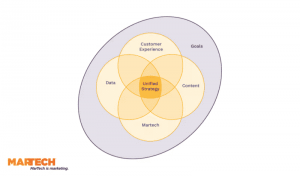As e-commerce grows and the Internet spreads through our lives to inform our hourly habits, e-commerce retailers must make sure they meet the rising expectations of customers in an increasingly connected world. Consumers are holding businesses accountable for their actions and funneling the entire shopping experience through a set of emotional standards that drive behavior.
Since e-commerce is driving retail in the U.S., it’s vital that online retailers deliver on customer expectations to ensure continued consumer engagement. But with more options available right in the palm of customers’ hands, this increased competition has made it more challenging for e-commerce sites to attract and retain customers. Consumers expect more these days, and your business can meet those expectations by providing an engaging, unique experience.
Your Customer is an Individual—Treat Them as Such
The distinction between digital and physical experiences is blurred further with each technological development. This progress extends to shopping, where consumers expect the best of both worlds for the best possible experience. This means offering the convenience of online shopping in your store and enhancing the personal experience of shopping with a sales assistant when browsing online.
This consumer expectation is increasingly met through the use of virtual sales representatives available via live chat. As an example, BaubleBar.com gives customers access to stylists who can talk them through products and combinations via video chat, simulating the real-world experience. These personalized interactions offer a valuable experience that supports the notion of the consumer as an individual and builds trust and loyalty for the long term.
Give Your Customers Face-to-Face Support for Better Outcomes
Video chat is not just for personalized shopping experiences using stylists—the technology lends itself to multiple phases of the sales process. Customer support, especially for technical products and services, benefits from the customer care technicians’ ability to visually engage with the customer in a personal interaction to address an issue. Amazon customers already enjoy this type of service thanks to the Amazon Mayday button.
This same approach can be used during the pre-sale phase of the buying cycle, when 36% of customers would like to use real-time video chat for customer support. This direct access to customers who are already considering a purchase increases conversion rates as salespeople are on hand to answer questions and showcase features in real-time, nurturing a relationship of trust.
Tony Zhao, CEO of video chat provider Agora.io explains the value, “Embedding reliable video chat into your business’s app or mobile site, that allows your sales or customer care reps to engage with your customers on a one-to-one basis while showcasing your product’s features or helping them out through issues they may be having, makes your brand much more personal and truly creates a unique experience, especially when it’s done well.”
Add Emotion and Evoke Conversations In Your e-commerce Shopping Experiences
The Internet has opened up a multitude of channels for your brand to interact with its consumers. This has given rise to content marketing to nurture relationships and the emotification of brands through visual storytelling on platforms such as Instagram, Vine, and Snapchat. When your business expresses itself through the content it shares with customers and shows it’s more than just a faceless entity, consumers feel they can identify with the brand even to the point of becoming unofficial ambassadors.
This type of relationship is a two-way street built on the emotional connection the consumer feels with your brand. When that connection can be shared with friends and family, your brand becomes a part of the conversation. Augmenting this relationship with things like the ability to build a wish list of products to share with friends and family who are connected through your app or website builds an online community that supports purchase decisions and ensures continued interaction with your business.
Give Your Customers the Ability to Discover What They Love
One of the most engaging factors in a productive shopping trip is the spirit of discovery and browsing the shelves and clothing rails, looking for something that catches the eye. This particular experience was previously difficult to replicate in the digital sphere, but it’s less of a problem with the rise of prediction engines and recommendation algorithms.
By leveraging historical consumer behavior data and predictive analysis, your e-commerce store is able to recommend related items based on the products your consumers previously viewed. Scrolling through a page of similar but distinct products is the equivalent of browsing a section of a shop floor, which makes the product discovery more intuitive and exciting. That feeling of stumbling across an interesting item is what shoppers enjoy, and it has led to the rise of entire sites built on recommendation engines. One such platform is Birchbox, which presents beauty and grooming products tailored to personalized preferences to help consumers find what they want faster.
The very nature of experience is that it is specific to us because it is informed by our decisions and actions. When creating an eCommerce experience, treat your customers as individuals, face-to-face interactions are a powerful way to communicate with customers, try to evoke emotions and start conversations and, let them feel like they’re discovering new products on their own. The ability to simulate the feeling of engaging experiences in the digital realm will be a key driver of business objectives for e-commerce in the future. What other ways are there to create a unique experience for your eCommerce customers?
Digital & Social Articles on Business 2 Community(12)
Report Post





